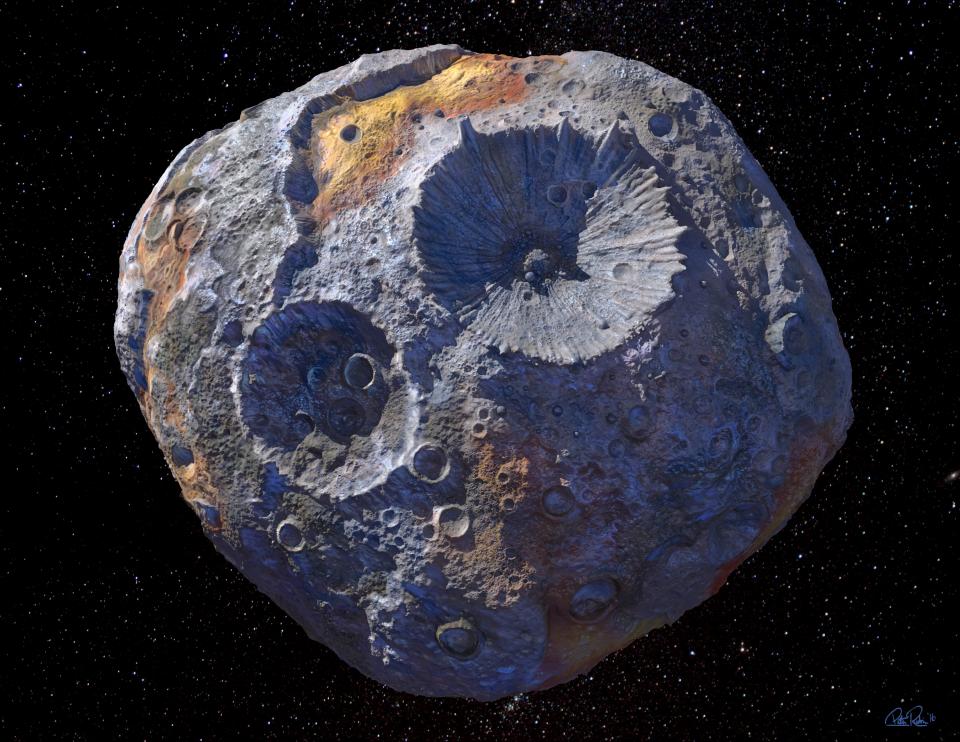Most asteroids are made of plain rock or ice — but not ’16 Psyche’.

According to recent observations perform using NASA’s Hubble Space Telescope, the chunky asteroid from the solar system’s main asteroid belt between Mars and Jupiter is mostly made of nickel and iron. This makes it an extremely atypical asteroid and a very valuable one — it’s worth as much as $10,000 quadrillion in raw resources by some estimates, or almost 70,000 times the value of the global economy in 2019.
Billionaires: ‘hold my beer’
Psyche spans 140 miles (225 km) in diameter, making it one of the largest objects in the main asteroid belt. In fact, Psyche is so large it was easily discovered using 19th-century technology in 1852.
The novelty is that now scientists have reported in The Planetary Science Journal the asteroid’s composition.
Scientists previously had some hints that Psyche is a dense, largely metallic object. This assumption has now been confirmed thanks to observations at two specific points in the asteroid’s rotation that offered a view of both sides of Psyche at ultraviolet wavelengths.
For the first time, astronomers have recorded iron oxide ultraviolet absorption bands in any asteroid. This is a clear indication that oxidation is occurring on the surface of the asteroid. Its high density suggests that the oxidated metals are nickel and iron. In fact, the entire asteroid might be the leftover core of a failed planet that never succeeded in forming into one.
“We’ve seen meteorites that are mostly metal, but Psyche could be unique in that it might be an asteroid that is totally made of iron and nickel,” Dr. Tracy Becker, Southwest Research Institute planetary scientist and co-author of the new study, said in a statement. “Earth has a metal core, a mantle and crust. It’s possible that as a Psyche protoplanet was forming, it was struck by another object in our solar system and lost its mantle and crust.”
The oxidation is believed to be caused by the solar wind. This flow of charged particles from the sun’s corona is responsible for the beautiful tails of comets, the formation of auroras in Earth’s atmosphere, and, in this case, the space weathering of Psyche.
Such metal asteroids are extremely rare, which is why Psyche was shortlisted in 2017 for a mission to study it closely using a spacecraft. The mission, which will be operated by NASA, is slated for a 2022 launch on a SpaceX Falcon Heavy rocket. The unmanned spacecraft would become the first to visit a body almost entirely made of metal, learning more about the asteroid as well as the solar system.
Since Psyche is believed to be as old as the solar system itself, findings from the mission could enrich our understanding of how planets form. Besides the scientific value of the mission, if you take into account the size of the asteroid and its metal composition, its total economic value could add up to $10,000 quadrillion, or $10 million trillion. That’s quite the incentive to visit the asteroid — provided, of course, we one day develop the technology to mine and retrieve metals from such asteroids.
“To understand what really makes up a planet and to potentially see the inside of a planet is fascinating,” Becker said.
“Once we get to Psyche, we’re really going to understand if that’s the case, even if it doesn’t turn out as we expect … any time there’s a surprise, it’s always exciting,” he added.


